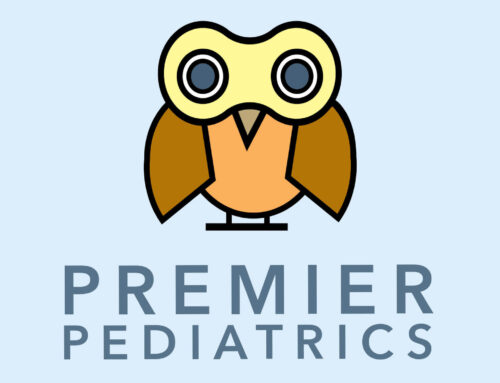For Birthworkers & Holistic Solutions
In June 2022, Dr. Linda Dahl (ENT) and Dr. Julie Capiola (Pedatrician & International Board of Lactation Consultant Examiners at Premier Pediatrics) met to discuss the mechanics and anatomy guiding the conversation around lactation and cover explanations, diagnosis, and treatment options that work from a strategic and comprehensive lens. The conversation was meant to help birth workers have a greater understanding of lactation challenges and functionality which may impact their clients’ feeding experiences. This event was moderated by doula, lactation counselor, and boober founder, Jada Shapiro, who shared her own experience in the field of lactation. Watch the video to learn more or enjoy the key takeaways below. The event was held at the initiative of Premier Pediatrics and The First Month.
Event Cliff Notes
Diagnosing from a Pediatric Perspective
Many pediatricians don’t have enough breastfeeding knowledge and consistent messaging, and misdiagnose tongue tie as “acid reflux.” We have to consider the state of the baby, the mom, and the weight gain of new infants. Moms usually have discomfort at the early latch, but that pain and uncomfortable feeding should be brief and non-persistent. If it’s consistent, that could be a sign of a problem with the latch. Babies may not get enough milk, are hungry, frustrated, cry a lot, or not gain weight in the early days. They might be cluster feeding all the time or very gassy at weeks 3, 4, and 5 due to gape abnormality. It also doesn’t have to happen in the first few weeks of feeding and can present a few weeks later with different symptoms. Dr. Capiola shares, “The solution most pediatricians are missing is to think short term; you can truly have a different baby every 12 hours! It’s key to be available, with consistent follow-up, to calm and support exhausted parents weekly, reassessing quickly and often.”
Diagnosing from a Breastfeeding Specialist + ENT Perspective
“There can be a problem with breastfeeding, or with tongue tie, or with both – but they aren’t always connected and need to be diagnosed separately. Tongue tie could not impact feeding, or feeding issues could be unrelated to tongue tie, but there’s a lot of confusing industry language being thrown around confusing parents and birth workers alike! It might not always manifest as pain in the mom, gassy babies, cluster feeding, or poor weight gain. It could also manifest as a number of different issues later on. Maybe babies can’t widen their mouth and unhinge their jaw, or form a seal and nurse with tongue movements like they should, creating a hinged jaw where they are sliding up and down in an unnatural way while feeding, causing pain, friction, and rubbing back and forth without a seal. Sometimes babies will get a blister on their upper lip, and moms will scar and bleed. If the parent has a lot of milk and is a heavy producer in the beginning, and the baby isn’t forming a seal, it can make them gain weight during the early stages and get colic (air pain) but still be hungry all the time because they aren’t getting a fatty high milk supply. It also doesn’t ALWAYS make sense to intervene, we really need to step back and look at the anatomy and mechanics in both mom and baby, as well as the symptoms and functionality effects taking place.”- Dr. Linda Dahl
Can lactation challenges cause depression?
YES! Breastfeeding struggles affect skin-to-skin bonding opportunities and oxytocin levels, correlating deeply with Postpartum Depression – another key reason education and widespread lactation support are so key for new parents.
What’s the difference between Cleft Palate and Tongue Tie?
Linda explains that cleft palate is when the muscles do not fuse together correctly, a bit more complex than tongue tie, making it harder for the baby to suck and swallow when breastfeeding. They often get fluid in their ears as the tubes are pointing down, but breastfeeding is indeed still possible with a cleft palate baby.
When to Intervene and Suggest Treatment
You need to make a diagnosis of exclusion – see if the palate is high, the jaw is set back, or if mom has tons of issues, assess milk supply, and exclude all possibilities BEFORE diagnosing a procedure or sending to a specialist. Awareness and implications around solutions are also needed – for example, not treating gape restriction is OK and has no long-term outcomes on the children. But if tongue tie isn’t treated, there are many things to consider regarding development and implications later in life. Nursing and latching is a SPECTRUM like everything in medicine and humanity. If Mom has TONS of milk, but babies are diagnosed with tongue tie, it might all be OK. If the baby has a slight gape restriction and Mom doesn’t have a lot of milk supply, there may be an issue. It’s TWO PEOPLE who need to fit and match up together, both mom and baby working together for individual solutions and treatments. The key is to arm parents with the right questions to ask their doctors, like how much pain is normal and what to look for.
Treatment Options for Tongue Tie
Dr. Linda uses sterile scissors as an ENT, others use lasers, and methods and techniques vary based on who you see. The key thing to think about is that evaluation, treatment, support, weighted feeds, guidance through gape release, tracking progress in baby and child after interventions, and follow-through care is missing in a LOT of interventions available today. Many doctors and dentists who aren’t also lactation specialists don’t stick with the patient and build out a process for what comes after the procedure, integrating a bodywork plan and making sure the parents and babies are supported with post-op care. Long Term implications should be informed by pediatricians before recommending procedures to parents, always! Sometimes physical therapy, craniosacral therapy, or holistic approaches are needed in aftercare post-treatment. Parents should never be pressured into a singular option or put in tough situations, that’s why education is needed, so everyone knows their options and the various methods and solutions available to them.
What are the implications of treatment options when it comes to Tongue Tie?
With over 19 years of watching tongue-tied children grow up, Dr. Linda Dahl explains that being born with a tongue tie is like being born with your shoelaces tied. You can walk, but may not be able to run, implications down the road could include issues like sinus infections, teeth grinding and dental issues, snoring, and even posture.
My pediatrician says there’s no such thing as tongue tie, or that it’s mild and shouldn’t be a concern. Is that true?
Dr. Capiola explains that one of the biggest impediments in helping parents today is that many pediatricians take this stance, it’s indeed a real thing, and we need to get more practices on board with new parent education and support! The American Academy of Pediatrics put out a statement, “Clinical experience has identified neonatal ankyloglossia, or ‘‘tongue-tie,’’ in a breastfeeding infant, is a potential source of maternal nipple discomfort and trauma, and of impeded breast milk transfer by the infant, thereby being considered a risk factor for premature breastfeeding cessation. A tongue-tie exists when the tongue is limited in its range of movement, and subsequent function, due to the presence of a restrictive sublingual frenulum.” What we need to do is take a step back BEFORE MAKING A DIAGNOSIS, and look instead at functionality + symptoms in both baby and parent. This way new parents feeling vulnerable, tired, and unsure would have the chance to advocate for themselves and explore all available perspectives + solutions before adoption.
ABOUT THE SPEAKERS
Pediatrician & Lactation Consultant, Julie G. Capiola, MD, IBCLC is a partner at Premier Pediatrics, home of The First Month. She completed her residency at Yale-New Haven Hospital, where she was awarded the prestigious Morris Krosnick, M.D. award. This award is given annually to the senior resident who best exemplifies the qualities of caring, compassion, dedication, and the pediatrician whom you would most like to take care of your own children. Dr. Capiola sees patients at the Manhattan location.
Dr. Linda Dahl is a writer, innovator, forward thinker, idealist, mother, E.N.T. doctor, voice and breastfeeding expert. Author of three books, Clinician’s Guide to Breastfeeding, Tooth and Nail: The Making of a Female Fight Doctor, and Better Breastfeeding: A Doctor’s Guide to Nursing Without Pain and Frustration, Dr. Dahl has teamed up with Premier Pediatrics to see patients in their Brooklyn office every Wednesday as part of The First Month initiative – a team approach to the newborn stage of life. Be on the lookout for more exciting events and workshops with Dr. Dahl and Premier on the horizon.
Jada Shapiro is a maternal health expert and the founder of boober, where expectant parents and new families find expert classes and vetted pregnancy to postpartum care providers, like doulas, lactation consultants, or mental health therapists when they need it. She also founded Birth Day Presence, a highly respected birthworker training center. She is a birth and postpartum doula, childbirth educator, lactation counselor, birth photographer, mother, and step-mother. Jada has assisted hundreds of births and she is a sought-out media expert from pregnancy to postpartum.




